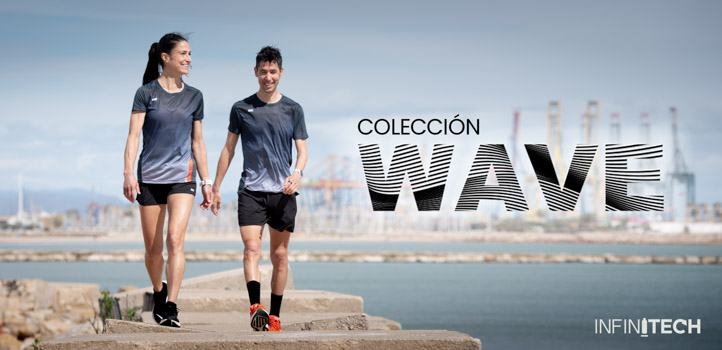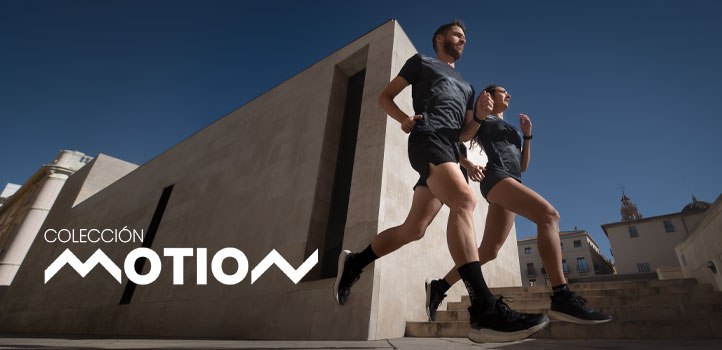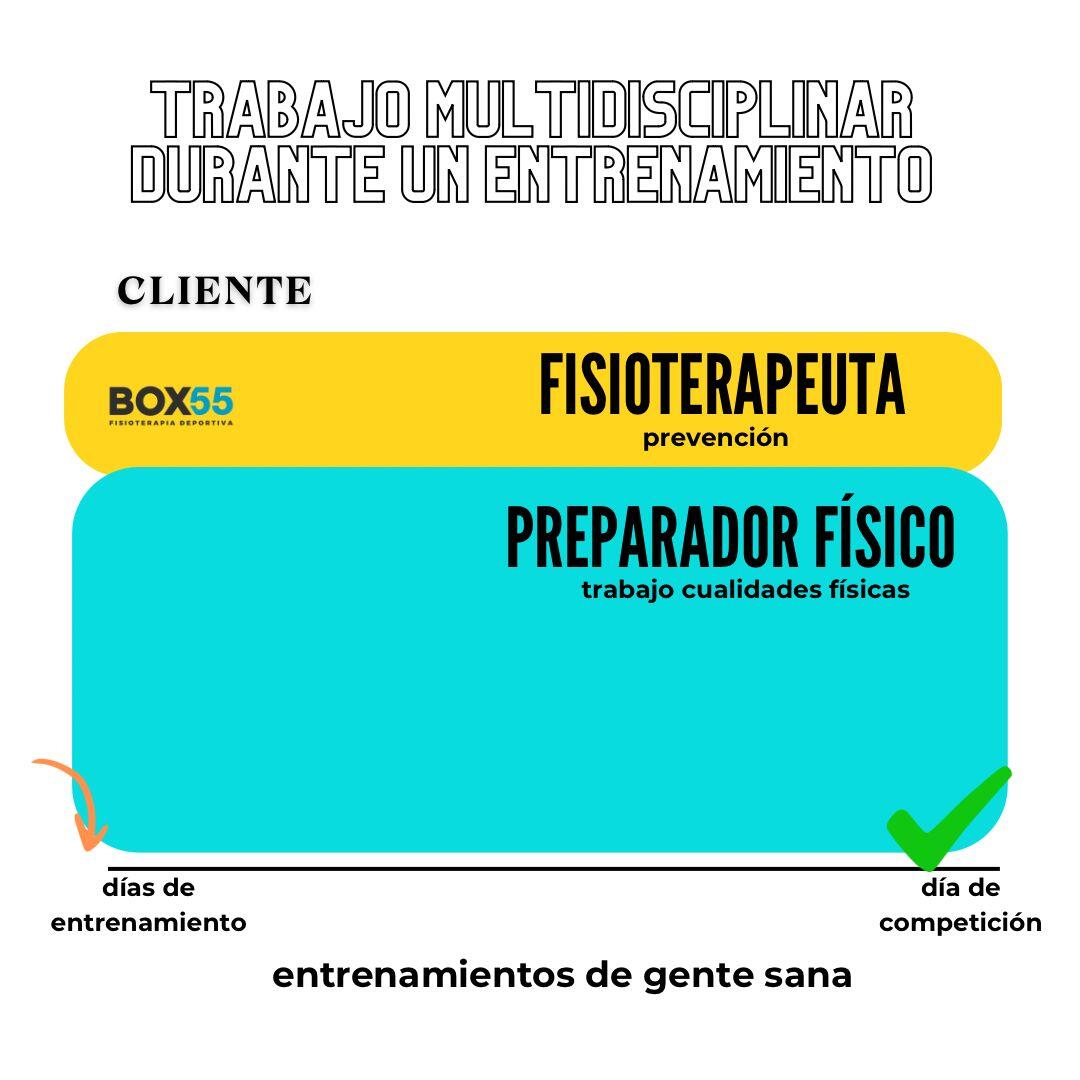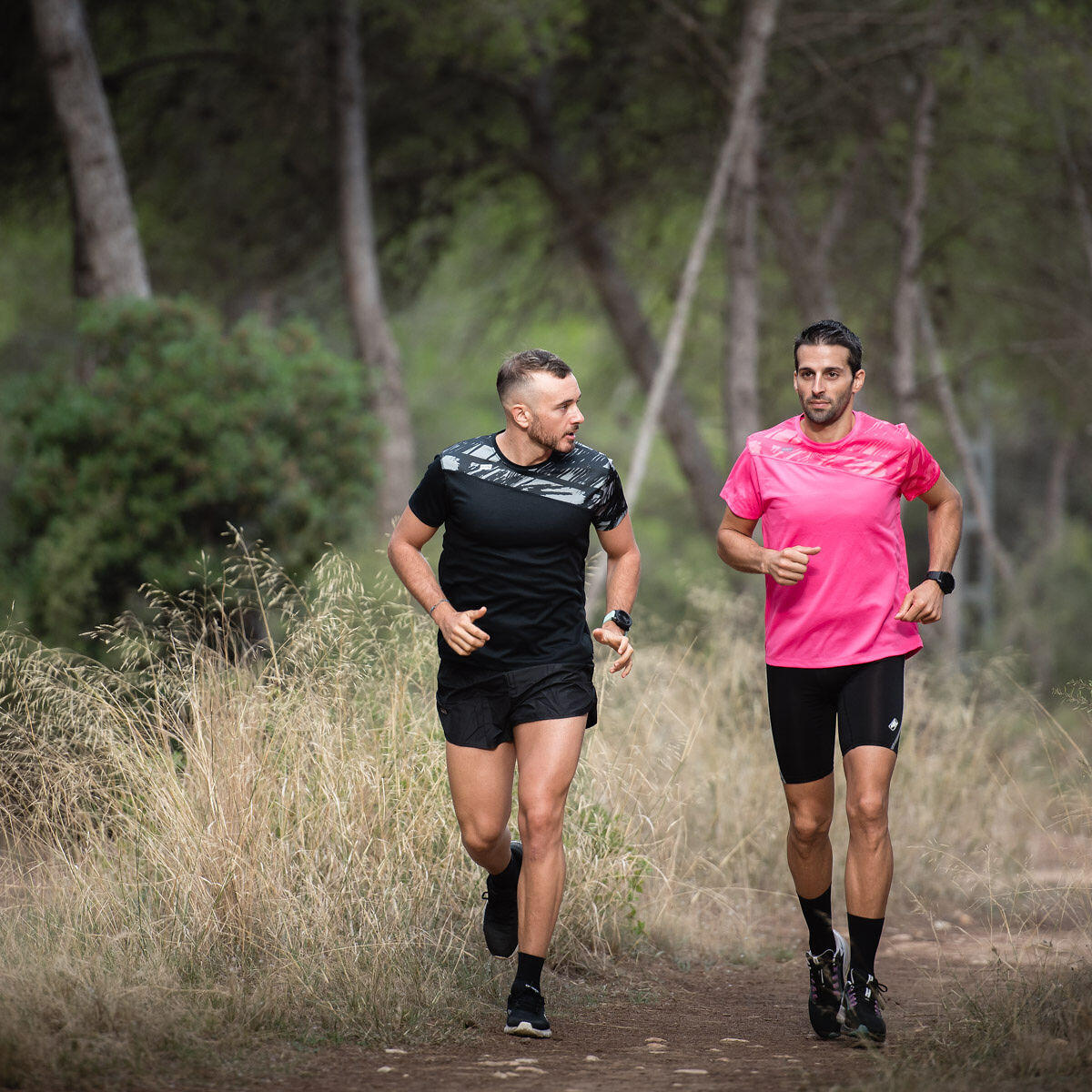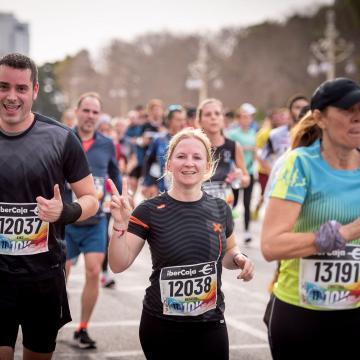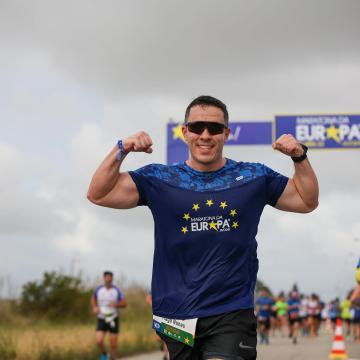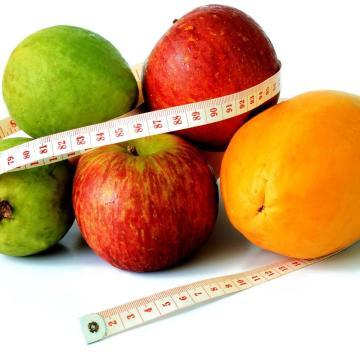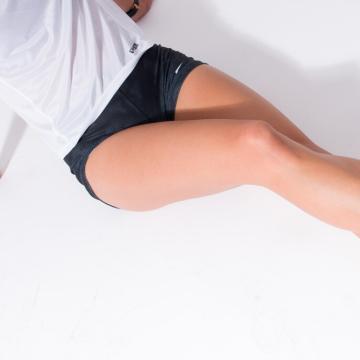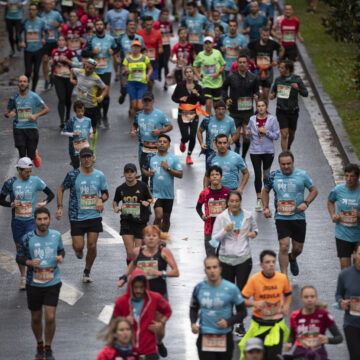Subscribe to our newsletter to find out about all the news and promotions, and automatically receive a welcome discount coupon in your email.
post -> Iron deficiency: hematological disorders in popular runners
Interest in exercise, especially running, has seen a dramatic increase in recent years. As an example, in 1985 it was estimated that there were more than 35 million people who were long-distance runners in the United States. But... have any of them suffered from problems of iron deficiency?
In the Valencian Community, the first edition of the circuit Racancer for the Spanish Association Against Cancer, got 4.500 participants in its first call of 2016, in this year's edition (2018) 14.000 registered are expected.
The increase in physical activity, with undoubted positive values for health, is also generating biological disorders related to it.
Some runners are beginning to experience tiredness, irritability, loss of ability to concentrate, drowsiness, frequent yawning... In short, a state of loss of form for which they cannot find an explanation.
When these runners have had blood tests, the existence of iron deficiency has been shown, which could be at the origin of the symptoms described. In short, anemic pictures that explained the loss of fitness.
Iron deficiency
There are several mechanisms related to long-distance runners, by which an anemic state of iron deficiency can occur:
1. Hemolysis (rupture of red blood cells)
This fact was described for the first time during World War II, when observing dark urine (hematuria) in soldiers after carrying out large marches, which forced the investigation of new materials that cushion the impact of the feet on the ground, avoiding the rupture of red blood cells, hematuria and consequently avoid hemolytic anemias of mechanical origin.

2. Iron deficiency (decreased circulating iron)
It is another circumstance by which iron deficiency can occur (with or without anemia) and whose most frequent cause is excessive loss from sweating. Under normal conditions, as a consequence of the sweating that produces the cellular desquamation, 0,4 to 0,6 mg of iron (Fe) are lost daily. Obviously in any athlete these losses are increased, between three to four times, depending on the level of training, weather and physical constitution.
3. Anemias of hemorrhagic origin
Here in the first place, it is necessary to point out the iron-deficiency anemias of women as a consequence of menstrual losses, to which we must add anemias due to lack of Fe -iron- of male runners.
The most important anemias due to hemorrhagic losses are those of gastrointestinal origin. In two studies, carried out on non-professional long-distance runners, it was observed that out of a total of 56 runners, 50 of them had hemorrhagic losses in the stool. The cause of these hemorrhages is not completely known, but the results seem to point towards the possibility that during physical exercise, there is a decrease in blood flow in the intestine causing small injuries that conditioned these hemorrhagic losses. It was also observed that they occurred more frequently among those runners who took aspirin or anti-inflammatories before the races.
In any case, what matters is to keep running, anemias related to this sport have a relatively easy solution.
The Eliana
June 11th, 2018
Jose Mayans Ferrer
Hematologist doctor
In summer, we have a calendar of carreers Popular full of evidence in towns that celebrate their festivals. You have to train to reach them well, but popular runners, like professionals, can also suffer from hydration problems caused by high temperatures. Drinking water and replenishing with isotonic drinks is fine, but the advice of running onlimetion to avoid dehydration they don't end here.
Throughout the year, fruits and vegetables should be an essential element in our diet. They are basic to follow one tolimebalanced ntation - something necessary for the running- and help eliminate toxins from our body. But, also, in summer, they are an important source of water, so we cannot eliminate them from our diet or we will risk suffering hydration problems during training or racing. Let's see the fruits and vegetables with a higher percentage of water:
- Cucumber, 96%
- Celery, 95%
- Tomato, 93%
- Peppers, 93%
- Cauliflower, 92%
- Peach, 92%
- Watermelon, 92%
- Strawberries, 91%
- Spinach, 91%
- Broccoli, 89%
We can eat them alone or we can combine these products in salads and salads. In addition to their water content, they are also an important source of vitamins and we will always appreciate having a fresh salad in our mouths. We must not forget meat and fish, which are alsolimebasic ingredients in our diet. For example, salmon is a blue fish with 67% water, as well as being rich in magnesium, iodine and vitamins A and D.
We will end with dairy, another source of water for our body (without forgetting the long list of benefits that these products have). Fresh cheese is 80% water, provides vitamins A, B and D and, unlike other cheeses, contains very little fat. Milk also helps prevent dehydration, while providing calcium and vitamins D and B12.
If you have found this post interesting, we invite you to read our section Sports Nutrition Tips
When facing the races, the rituals of many popular corridors could be compared to those of the bullfighters before jumping into the ring, which makes for a few anecdotes from popular runners before, during and after the race.
The rituals start hours before, with the last intake, which should be at one hour and consuming some bylimeCertain times, always the same.
 As the time to compete approaches, the rituals multiply, the same kit with which such a good time was obtained in that race, the Socks green that they gave me too long ago but that are like my amulet, the shoes, first always the right (or the left) and with the perfect knot, made with almost maternal care.
As the time to compete approaches, the rituals multiply, the same kit with which such a good time was obtained in that race, the Socks green that they gave me too long ago but that are like my amulet, the shoes, first always the right (or the left) and with the perfect knot, made with almost maternal care.
It's time to pick up the dorsal and the chip and they must always be placed in the same position and height, using the same number of safety pins and always with the shirt removed.
And the moment of truth arrives, you have to get ready for the exit, here the popular runner manias multiply: always stand on the right because on this side there are fewer trips, tie the bride's handkerchief or the kid's sock to the wrist, cross yourself or utter a harangue “at the top of your lungs”, and of course, for lovers of the music, have prepared that mp3 with the music to use “only in races”.
The race begins, and you always have to start with the same leg and collect the supplies from the same side. When you finally reach the finish line, step on it with the shoe that carries the chip.
Finally, the manias continue later at home: save the bib, wash the clothing but not the amulets, and so on until the next race, but that will be another similar story, or maybe not ...
The 10k has become the popular test par excellence and for many people who are starting out in the running It is the first great competitive challenge in which to defend a number. In this article we are going to offer you tips to prepare for a 10k.
The 10k is a distance that more and more popular runners dare to do every day. The 'boom' of running In the last decade it has meant that many tests of this distance have been born and that almost all cities or towns of a certain entity have their ten thousand meter race.
In many 10k events (it also occurs in distances such as the 15k, the half marathon or the marathon) it is possible to find people who face the distance for the first time without adequate preparation to complete the test within the time allowed by the organization; The problem, however, is not arriving outside the time limit but rather subjecting the body to an effort for which it is not sufficiently prepared.
We have turned to the specialist Marcos Greus, high-performance trainer and coach in endurance sports, to ask for advice for someone who wants to prepare for a 10k (their first 10k) and do it in a sensible way and with the peace of mind of having the necessary preparation to face the challenge.
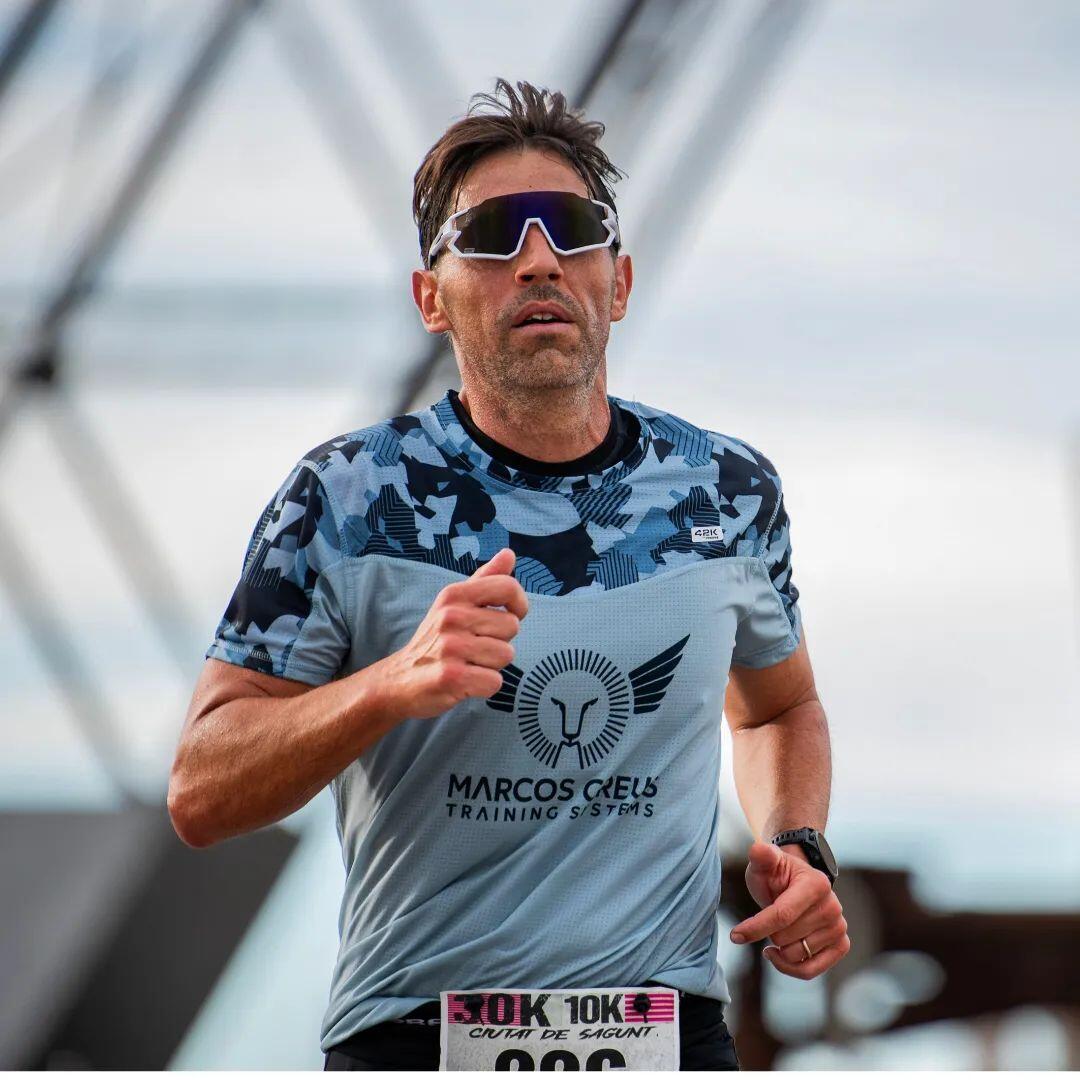
We have asked you a series of questions, taking as a starting point the situation of a popular runner who is already able to endure 30/40 minutes of continuous running, who goes out running 3 days a week and who is willing to increase your training time (plus time per shoot and adding a fourth day of training).
Preparing for a 10k requires being in shape
Preparing for a 10k is usually the first big sporting challenge for many people who get into running. runningIs it really a distance suitable for anyone?
Many people start running for health reasons, to feel well, to reach or maintain an adequate weight... As long as there is no medical contraindication, it is a good decision to start running, but running is a demanding physical activity that requires minimal preparation to avoid scares or problems; I always say that You have to be in shape to start running and not run to be in shape..
When you start running it is very important to be sure that you are in physical shape that guarantees that you are not at risk of injury.
It is more common than we think to find people who start running after a long time of total inactivity, who are overweight (with the risk that this can pose for the joints), without muscle tone and without having a prior medical check-up. And at the height of absurdity there are also cases of people who dare to run starting with popular races, which is a blunder and recklessness.
The boom of running that has been experienced in recent years has meant that many people sign up for races without adequate preparation and in some cases even without having barely run before. I have known cases of people who have signed up for races right away because they said that they found a stimulus to train and motivate themselves to run.
Prepare a 10k requires being in shape as a first requirement and, furthermore, committing to carrying out preparation work that is demanding because we are faced with a distance that seems very affordable (and really is with the right preparation) but that is not within everyone's reach because it involves running for around an hour uninterruptedly. ; It's one thing to run 20-25 minutes and quite another to run 60 minutes continuously..

How long is it advisable to have been running to consider running a 10k with guarantees of finishing it correctly and without problems or taking risks?
In general, my recommendation for anyone would be to face the challenge of preparing for a 10k when you are really sure that you can do it. run between 10 and 12 kilometers with solvency. What do I mean by “solvency”? Well, the cardiorespiratory system, the muscular system and the bone and ligamentous system are capable of supporting 10 kilometers at an easy pace; At that moment and not before is when you should think about tackling a 10k.
Many people go for their first 10k without having gone beyond 7 or 8 kilometers and, fortunately, nothing happens to the majority, but it is a distance in which there are risks that can cause discomfort or even injuries that could be avoided with a little more preparation, perseverance and, above all, patience. In recent years impatience has prevailed in the running popular; Fear and respect for distances have been lost, which is something that seems worrying to me.
When you can run 10 kilometers reliably at an easy pace, it is time to slightly increase the intensity and volume of training kilometers to face a 10k.
And why increase intensity and volume in training? Well, because in a race, inevitably, you will run at a faster pace than in training; When you put on your number it is normal to want to give your best and the body has to be prepared to run at a higher intensity.
Therefore, the sequence of steps to follow before facing the first 10k would be...
First step: Be able to run 10 kilometers with ease at an easy pace.
Second step: When you are already able to run 45-50 minutes three times a week with ease, it would be a good time to think about running a short race, 5 or 7 kilometers, to have a first contact with the competition before making your debut in 10k.
Third step: Increase the intensity and volume of kilometers to prepare the body for the highest intensity that we will demand of it on race day. How to increase the intensity? With short fartleks, such as 10 one-minute changes of pace with breaks (light jogging, without stopping) of 2 minutes. How to increase the volume? Running at a calm pace 12/13 kilometers.

10-12 weeks of specific preparation to prepare for a 10k
How long before the test would it be advisable to start training to adequately prepare for a 10k?
It depends on the starting state of each person; Starting to run from scratch is not the same for a sedentary person as it is for an active person who exercises or practices other sports regularly.
The starting state of each person will be decisive in establishing what type of training, how many days of training and what the appropriate planning should be to aspire to run a race safely and without risk of injury or health problems. .
At this point I want to claim the importance of a professional in Physical Activity and Sports Sciences being the one who determines what the optimal planning is and is also the one who guides the path of preparation; Only a physical preparation professional will be able to objectively determine what a person's starting physical state is and, therefore, what is the most appropriate preparation to face the challenge of preparing for a 10k.
In the case of an active person (not sedentary), who performs physical activity with some regularity and who does not have any physical limitations or medical contraindications, the normal period to prepare for a 10k would be 10-12 weeks of training running 3 times a week and doing at least one day of strength training.
What is essential from the point of view of a physical trainer before starting to prepare for a 10K?
Determine very well what the person's starting point of fitness is. Something very important for me is to make a anamnesis Sports, that is, an analysis of the medical history and personal and family history to be able to adjust the training loads as much as possible to the reality and circumstances of that person.
As I have pointed out before, starting to train a person who is coming from a period of inactivity (whether due to injury or disconnection from sport) or a sedentary lifestyle is not the same as starting to train someone who already does some sporting activity and who, therefore, already has muscle toning or adaptation to start with specific training focused on running.
It is essential to determine the starting point and carefully examine what is in the 'toolbox' of the person who wants to prepare a sporting goal.
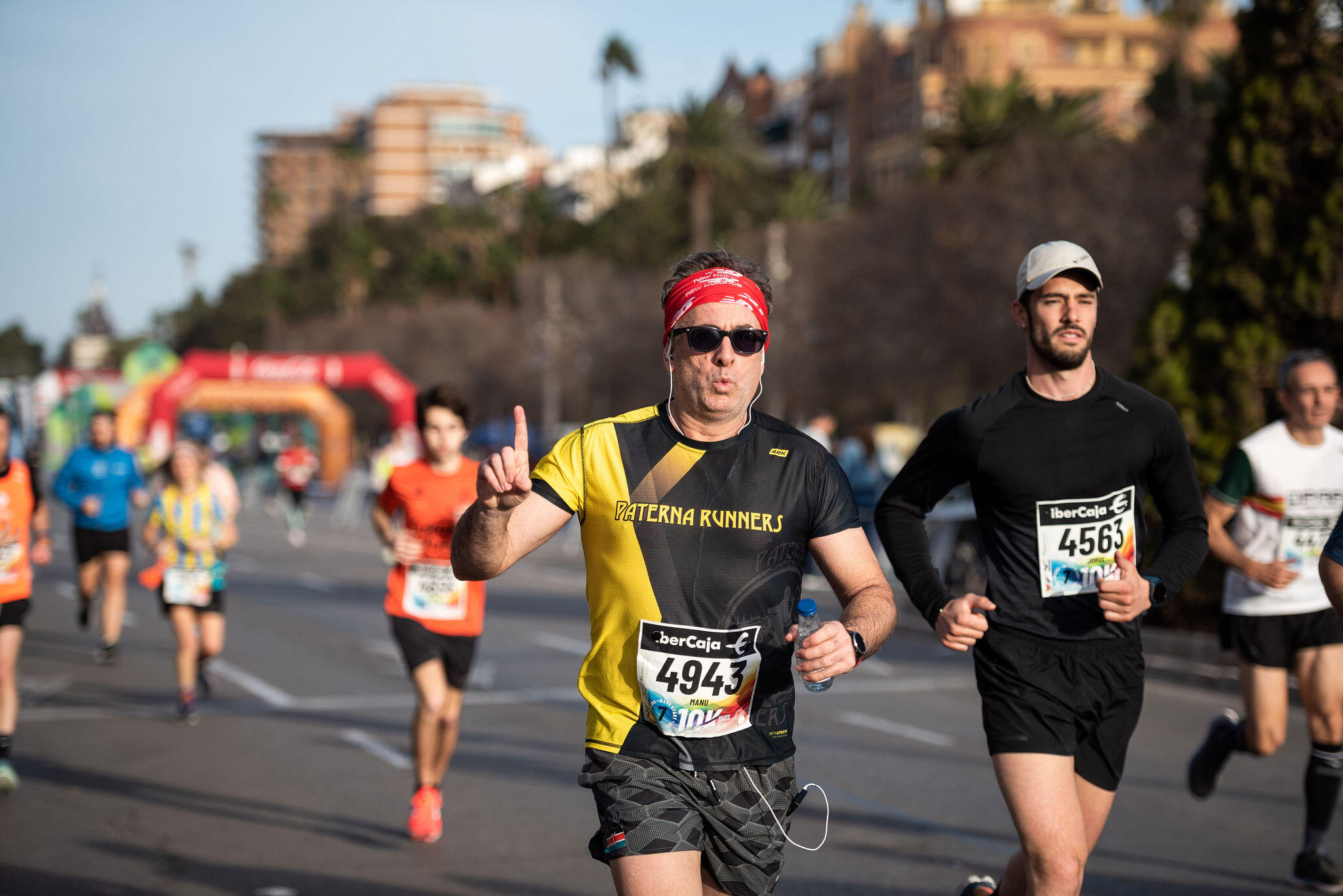
What do I mean by what's inside 'the toolbox'? I'm going to explain it with an example: person and a half on Saturday and Sunday; In person X's toolbox there is also the possibility of going to a gym for one or two days or doing a day of pool training...
With all that information, with everything I know is in person X's toolbox, I can design and build the most efficient training possible to address the sporting goal. That is why I say that for me the initial history of the person/athlete is essential to be able to properly adjust training days and workloads.
Yes, you have to train strength to prepare for a 10k
Is it important to incorporate strength training into preparation to debut in a 10K?
Absolutely yes. Strength is the basis of any physical preparation and it is important to prepare for a 10k. For someone who wants to face a 10k for the first time with the aim of finishing it with solvency but without pretensions of making a mark, specific work in the gym or with weights is not necessary, but a self loading work; This work could be with tires, TRX, on stairs, on slopes...
Strength work is necessary because it will allow train more, better assimilate training loads y reduce the risk of injury. And why do I say that it will allow you to train more? Well, because by doing strength work you can be more consistent in training and in the end the key in any endurance sport is perseverance and patience. The person who is constant, who does not skip or miss workouts, is the one who progresses.
In a 10k you take between 8.000 and 9.000 steps, which means supporting your body weight multiplied by 4 each time you step on the ground; If at the bone, muscle, tendon and ligament level you are not strong enough and prepared to withstand this enormous volume of impacts, discomfort and injuries may appear, and it will be of no use to wear very expensive shoes.
The most common mistake when debuting in a 10k: not keeping pace
What mistakes should you try to avoid when running a 10k for the first time?
The most common mistake of the beginner is usually getting carried away by the emotion of the race and not keeping track of the pace.
Act quickly. avoid going out at inappropriate paces because you end up paying for that after kilometer 7. You have to plan your pace from the start and run with a cool head at all times, but especially in the first kilometers.
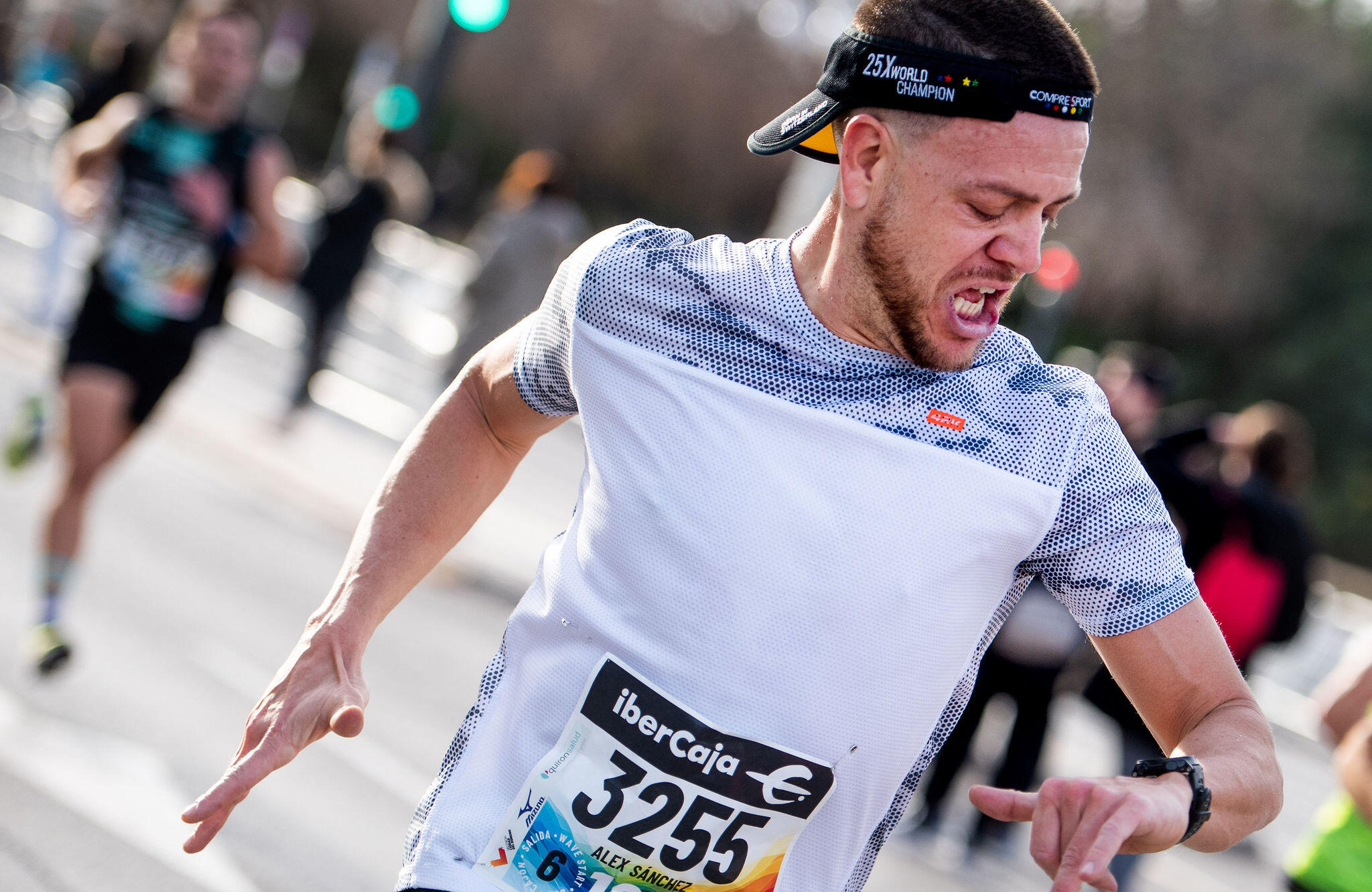
I always tell beginners in any distance, be it a 10k or a half marathon or a marathon, that you have to run at the rhythms or pulses that have been trained and assimilated. You should not overestimate yourself in the first kilometers no matter how good the sensations are; That feeling of believing that the bib number is going to give you that extra performance to run faster throughout the entire route is very treacherous.
Another indication that I always give to the runners I train is that the day before and the day of the race There is no need to do anything that has not been previously trained..
There is no need to do “experiments”. And on race day you don't have a different breakfast, you don't drink more coffee, you don't wear new clothes, much less shoes (which may sound like a joke, but I know of cases), you don't take an energy gel before the race because it's a recommendation from someone with a lot of experience, you don't drink something during the race that you haven't tried before...
On race day you don't have to do anything new; Everything that is done on race day has to be trained and assimilated prior to the race.
What would be important to be clear about before considering putting on a bib in a 10k?
The most important thing is to be clear that you want to run a race. There are many people who end up putting on a bib because of “pressure”. I know of cases of people who sign up because friends or family insist on doing so when they have been running for some time and they do it almost out of obligation.
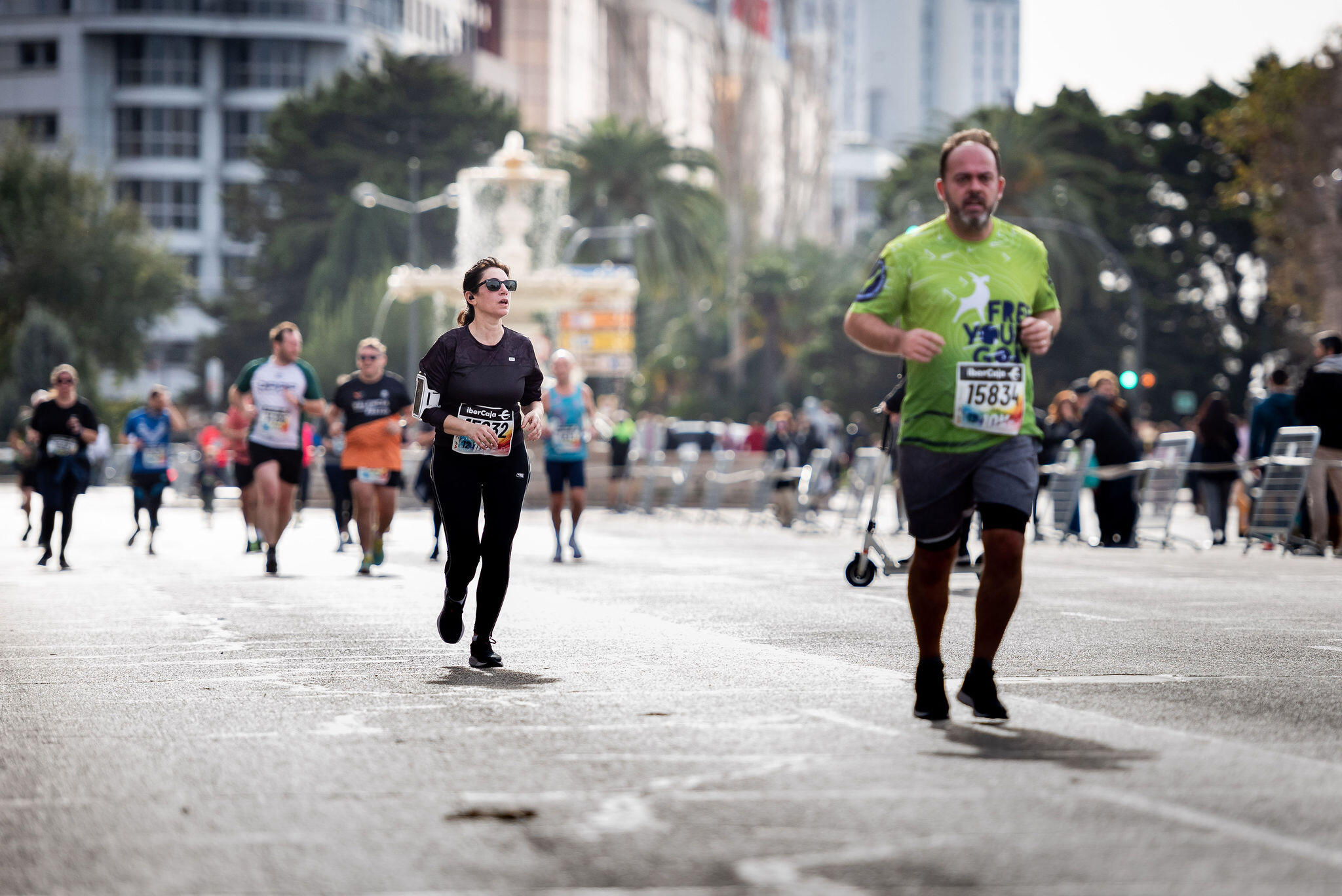
Facing a race, especially for the first time, generates stress that not everyone likes or enjoys. There are many people who like to run for health or for fun or to disconnect and who don't like to compete, and that's okay. Putting on a bib and facing a 10k is something you really have to look forward to. It is absolutely respectable that someone decides to run and has no interest in the competitive aspect.
Do you want to improve as a runner? Put yourself in the hands of professionals. To achieve sports goals, whether elite or popular, you must seek advice from someone who can really help you with judgment, seriousness and professionalism to improve as a runner in the section of training, preparation, nutrition, injury prevention and recovery... etc.
Internet and social reds have been a infinite amount of information available to anyone who is starting out in sports, information that can be very diverse: training, sports planning, nutrition advice, recommendations for injuries...
In many cases this information comes from serious sources, but has been provided in a generic manner, without taking into account the particular case of a specific person or patient. There is also information that comes from very unreliable sources and that should be ignored because in addition to not helping you improve as a runner, it can cause problems for you.
To improve as a runner you have to seek the right advice
We live in a time in which everyone has access to information at the click of a button and in which it is very fashionable to publish content on social reds about sports, nutrition, training... and, of course, physiotherapy.
Many professionals who have studied and achieved the corresponding degrees that accredit our knowledge and, therefore, the competence to offer quality services and advice to athletes, we witness with astonishment, disbelief, patience and, sometimes, indignation at the absurdity of finding, on a daily basis, on social reds people without qualifications or degrees pontificating on subjects about which they have little knowledge.
Some even profit from their advice, recommendations and advice based on knowledge that they do not prove (probably because they lack the required qualifications). Unfortunately, many of their clients are not aware of the risk they run by putting themselves in the hands of people who advise on training-preparation, injury recovery, nutrition or physiotherapy without training and without qualifications to prove their competence.
I am going to try to clarify which professionals can help you achieve your goals (and therefore improve as a runner) and which false professionals put your health at risk due to lack of preparation, lack of knowledge or desire for prominence.
In my opinion there are two basic rules to start dealing with this topic:
- Practicing a sport does not make you a professional specialist in it.. For example, no matter how good you are at playing soccer, you are not a coach; No matter how good you are at CrossFit, you are not a CrossFit coach; and, logically, no matter how good you are at running and no matter how good a time you have in the marathon or 10K, you are not a sports coach. running/athletics.
- The type articles… «7 definitive exercises to have iron legs» o «training to lose 50' in 10K» o "core training to be a better runner" that you find on the Internet or on social reds are not the ones that are going to be best for you (they may even harm you); They are articles written for other purposes (improve positioning, improve visibility, attract attention, gain followers...) but they are not really designed for you.
My advice is that you look for a true professional who is trained (and qualified, because that is a guarantee of having acquired knowledge), updated and, above all, who has experience in what you are looking for, be it training-preparation, nutrition or physiotherapy. If you really want to improve as a runner, don't put yourself in the hands of people

Without health there is no achievable goal
I frequently see people on social media offering information about physiotherapy or injury recovery (which is my professional specialty) without any criteria and, worst of all, without taking into account that giving inappropriate advice can lead to physical problems and even injuries. And injuries, I know from professional experience, destroy people's dreams and sporting aspirations. A phrase that I repeat ad nauseam with my patients and also when I teach classes is "without health there is no achievable goal".
With this article I intend to clarify the role of each of the professionals that you may encounter as a runner in your sporting activity (and to improve as a runner it is very important to be clear about this).
The first thing I want to make clear is that If you have an injury, you should go to a medical professional. to diagnose the injury; From there, I consider it very important to clarify the distribution of roles between physiotherapist, physical trainer and coach:
- Un physiotherapist trabaja so you can train.
- Un physical trainer trabaja so you can compete.
- Un coach trabaja so you can perform.
Are you a patient or client? An important difference
A very important aspect to keep in mind is to know if you are a patient or a client, what difference does it make? Well, very simple: if you are injured or need to prevent injuries In order to train, the professional you should turn to is a physiotherapist, because you are a patient. If you are healthy, you are a client and what you need is a degree in Physical Activity and Sports Sciences.
If you are a patient, you need a physiotherapist
The physiotherapist is the professional who is in charge of improving the injured structure while respecting the tissue healing process; In addition, it works on the sports rehabilitation of the injury or preventing it, based on physiotherapy tests that help ensure that you can train without pain or discomfort to give quality to the training of sports professionals, who are the physical trainers of yesteryear and who Now they are graduates in Physical Activity and Sports Sciences.
A physiotherapist accompanies the athlete when he is injured; and when he is not injured, the physiotherapist can help him prevent with exercises evaluated through functional physiotherapy tests, for example with the Valobando App (you can learn more about what it consists of in the article «The importance of the sports physiotherapist»), generating specific work for the athlete with a health objective, since they are health professionals.
A physiotherapist can make a physiotherapy diagnosis, which, together with a previous medical diagnosis, serves to design recovery work and also serves to avoid relapses.
If you are not injured, you are a 'client' and need a degree in Physical Activity and Sports Sciences
The graduate in Physical Education or currently the Degree in Physical Activity and Sports Sciences is the professional who is in charge of preparing the runner who is healthy (not injured) to compete. If you are not injured, you are not a patient, but a client with a competition goal in mind.
The graduate in Physical Activity and Sports Sciences is the professional who is in charge of, once your physical qualities have been evaluated, preparing you so that you can compete to the maximum and improve as a runner; he is in charge «to look for your best version», which is an expression that is very fashionable now. To improve as a runner, it is essential to have the advice of an expert in physical preparation to be able to get the best out of your physical qualities.
Furthermore, a graduate in Physical Activity and Sports Sciences who is specialized in high performance in endurance sports is the one who can best guide you in planning training to achieve a specific goal.
Now, can a physical trainer readapt an injury? And a second question: can you train a patient with an injury?
The answer to the first question is a resounding NO because it has not been trained for it; Doing so would be a clear example of work intrusion, in addition to putting the 'patient's' health at risk, because a runner who requires rehabilitation due to an injury is a patient and not a client (which is why I previously made the distinction between patient and client).
The answer to the second question is more complicated, but I will try to clarify it: a patient (a runner with an injury) must be supervised by a physiotherapist in the stretcher and readaptation phase to the sport, but is not exempt from working on the physical qualities that your sport requires and that is the part in which the Physical Activity and Sports Sciences technician intervenes, but always under the supervision and tutelage of a physiotherapist.

The physiotherapist and the degree in Physical Activity and Sports Sciences go hand in hand in the training and recovery process of an athlete. It is a professional tandem that can really help anyone interested in that goal improve as a runner.
Once the runner has recovered from the injury, the person in charge of directing the training process is the graduate in Physical Activity and Sports Sciences, but the physiotherapist is obliged to generate the correct situation to that the athlete does not get injured and can train to the maximum with his coach.
At this point I would like to talk about other professional profiles (for some of them it would be more appropriate to talk about 'pseudo professionals'), especially because in recent years they have proliferated on social reds giving all kinds of advice to runners (preparation, nutrition, training, injury prevention, injury treatment, health advice...) and, honestly, I think that many of them cannot help you improve as a runner.
- Massage therapist. Person who has studied a course on how to give massages, but cannot treat pathologies because they have a very poor knowledge of anatomy. You have ‘customers’; You can go to it simply to release muscle tension, but not if you have an injury or pathology.
- Chiropractor. The chiropractic It is based on practices and beliefs that are considered pseudoscience. They are dangerous because with little training in anatomy they manipulate vertebral joints and that can pose risks to people's health.
- Monitor. There are two kinds:
- Room Monitor or Personal Trainer. Normally it is a Higher Technician in Physical and Sports Activities (TAFAD), a Vocational Training qualification that is included within the branch of Sports; They train for two years, but logically they do not have the knowledge of a degree in Physical Activity and Sports Sciences. It is a hybrid between the professional who wants to get the most out of you and get you in shape. There are also 3-month courses, it is a course with little training and low quality.
- Monitor of disciplines such as Pilates, yoga, boxing, swimming, paddle tennis, tennis, etc., they are professionals in activities specialized in a method or sport.
- Druid, shaman, brujo, neighbor with powers, friend who reads hands… They are people who help spiritually and really only help those who believe in superstitions.
- Acupuncturist. Person who inserts needles to perform acupuncture treatments; Not to be confused with physiotherapists or doctors trained in traditional Chinese medicine.
- Expert in nothing and everything. This is a dangerous profile: his sporting experience is all his knowledge and he believes that this qualifies him to coach others. Unfortunately, I have had several examples in my clinic of runners injured by following the advice of that friend. "who has been running for many years and has won several popular races", which is why he considers that he can serve as a coach for anyone.
- Youtuber, content creator, influencer… This is a profile that has grown on social reds and that, in my opinion, has every right in the world to generate content as long as it does not delve into professional fields that have to do with health, and for me health It is nutrition, training, physical preparation, injury recovery, physiotherapy...
In conclusion, I believe that health must be taken very seriously. In general, most true professionals are respectful of their areas of action. Specialization is essential to provide health guarantees to athletes. A physiotherapist cannot delve into the terrain, for example, of a podiatrist, in the same way that a traumatologist cannot act as a nutritionist or a physical trainer cannot determine how recovery from an injury should be done.
Starting to run after 40 is very common. In the last decade, both in Spain and in many other countries, the number of people who start running when they are close to 40 or even when they have surpassed them has grown remarkably.
reasons for this boom of runners after 40? The first reason could be that correr (The running) is in fashion and it has been shown that it is not a passing fad. Running has become a way of "invest" in health, leisure, relaxation...
For more than a decade now, the number of people who run (especially in the age bracket that goes from 35 to 50 years) is at levels that were unthinkable in the last decades of the last XNUMXth century.

Another very compelling piece of information is the comparison of the current numbers of participants in popular tests (5K, 10K and 15K), half marathons and marathons with those registered 20 or 25 years ago; The spectacular increase in the number of tests, both asphalt and mountain, that has taken place in the last five years is even very striking.
Still the percentage of men who run is higher that of women, but in the last decade (especially in the last five years) the growth of women in the running It has been very big in Spain.
A good thermometer is offered by the registrations for the races, which confirm a progressive growth in the percentage of female participation. And when analyzing the female participation in recent years in popular tests, it is observed that the highest percentage of female runners is concentrated in the age bracket that goes from 35 to 45 years.
Furthermore, another reason why running is fashionable and becomes the option chosen by many people who decide to do sports after 40 is that it is a cheap way to do sports and you can easily fit into complicated work schedules and family obligations.
Many people acknowledge having landed in the running from 40 to be the most flexible option to do sports that they have found without depending on fixed schedules and with the freedom of being able to put on their shoes and go out for kilometers at any time.
Before starting to run after 40, you should consult your doctor
As long as you do not have any health problems, physical limitations or are overweight (running with overweight can be harmful to joints, tendons and ligaments), start running after 40 can be healthy and positive, especially if it means abandoning a sedentary life and resuming physical activity. However, if you decide to start running after 40, it is advisable take a series of precautions to avoid unnecessary trouble.
And the first of the precautions must be consult with your family doctor in case you advise against running for any medical reason (chronic pathology, risk of specific injury due to a previous problem, incompatible drug treatment or that may affect heart rate...).
If the family doctor sees no problems, you can start adding the first kilometers of Thief (Walk and run, the method that we will see later), although it is very likely that he will talk to us about the convenience of performing a general check (a checkup and a blood test) and even submit to a stress test or ergometry to check the real physical state in which we find ourselves. For running it takes a healthy heart because it is a demanding physical activity.

From the age of 40, especially if you have not run before or are running again after a prolonged period of physical inactivity or sedentary lifestyle, it is necessary to be sure that the running It is not going to become a dangerous sporting activity or one that poses any risk to health.
Health and sport they must go always hand in hand. If our trusted doctor considers a review, analytical test and/or stress test necessary, we must listen to him.
General recommendations to start running after 40
Before listing a series of practical advice for anyone who decides to start running after 40, it is convenient to make some recommendation (or precaution) to take into account.
After making it clear that the first thing is to consult with our family doctor and follow his instructions (in terms of check-ups and revisions), we must also insist that certain things must be very clear from day one.
The first is Take it easy. There is no need to be in a hurry to progress. You need a adaptation period which can be more or less long according to each person; Logically, the adaptation will not be the same for those who have practiced sports regularly as for those who have spent several years without performing any physical activity or with a sedentary life.
Act quickly. start running little by little and, at least during the first 4/6 months, no competitive goals. After the age of 40, the body does not respond the same to the efforts that it does at the age of 20 or 30. From the age of 30 you begin to lose muscle mass (according to studies, between 3% and 5% every decade), so at 40 you do not have the same muscle strength, nor the same elasticity and recovery capacity after the efforts.
Therefore, it is necessary to be patient and favor the progressive adaptations of the muscles to the effort.

In general, if you have perseverance and strictly follow a training plan of 3 days a week, the normal thing is that three or four months after starting to run you begin to notice improvement (logically, everything will depend from the starting point of the physical state of each person).
So, you have to have patience and perseverance to overcome the adaptation period of 3/4 months which is usually what is normally needed to notice improvement and begin to "enjoy." Consistency is the best ally in any sport, but in running It is crucial and especially in the first months, which is when there are more reasons for discouragement.
The objective is progress 'with head' and without haste. Age makes you lose strength, aerobic capacity, flexibility... When you start running after 40 you have to be very sensible with training and with the efforts that are made in them. 'Forcing the machine' in the first months is going to mean a very high risk of discomfort and, worst of all, possible injuries.
Getting injured in the first few months of starting to run can be very discouraging because how much or little progress you have been able to make will come to nothing if you have to stop due to injury.
Practical advice to start running after 40
1. Follow a training plan
If you are starting from scratch or after a long period of inactivity, it is very important Have a proper training plan to the starting state.
The recommended thing to start running after 40 is to have a training plan designed by a fitness specialist. This way we will have the security of doing things right from the beginning and avoiding risks of injury. With a physical trainer who designs a tailor-made training plan, it will be much easier and safer progress.
Another option to get started running is CaCo method (Walk and run). The CaCo method is recommended for people who start running from scratch, but also for those people who return to running after a long break (whether for personal reasons or due to an injury), since it will avoid problems in muscles, tendons and joints.
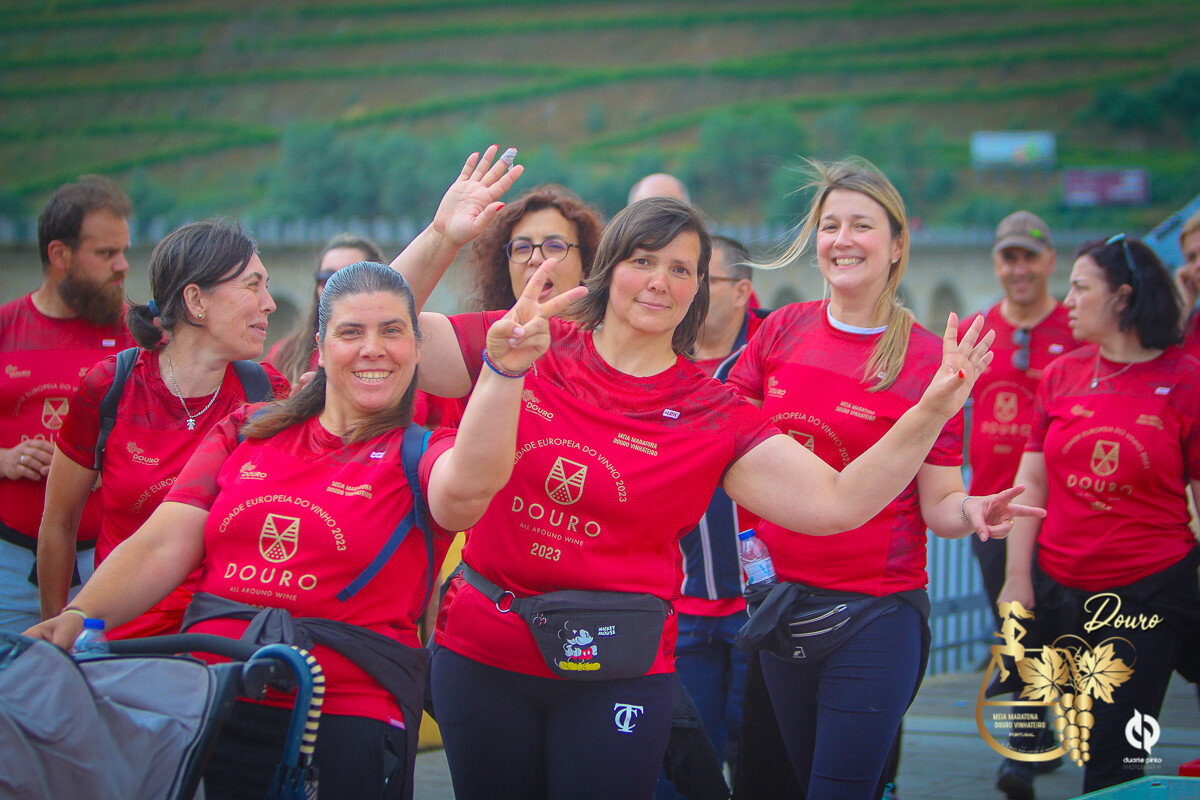
2. Invest in adequate and quality equipment.
It is not necessary to buy a state-of-the-art kit, but it is convenient correctly choose technical clothing and shoes.
The choice of slippers It is a subject that can be complex at first and that is why it is a good idea to seek advice from a specialized trade. You have to choose between more convenient to our footstepsa (supinator, pronator or neutral), weight (the weight is important to determine the ideal damping), number of kilometers weekly to be carried out and the terrain type on which you are going to run (dirt, asphalt...).
In our article 'Shoes to start running' We explain everything you have to take into account to choose a pair of shoes to start running.
The choice of technical clothing is, without a doubt, easier than shoes. You have to opt for light and comfortable clothing, that offer good breathability y speed of drying. In the article of this same blog titled 'Technical clothing to start running' A series of recommendations are detailed to know what to look for when choosing technical clothing to start running, especially what type of shirt and socks.
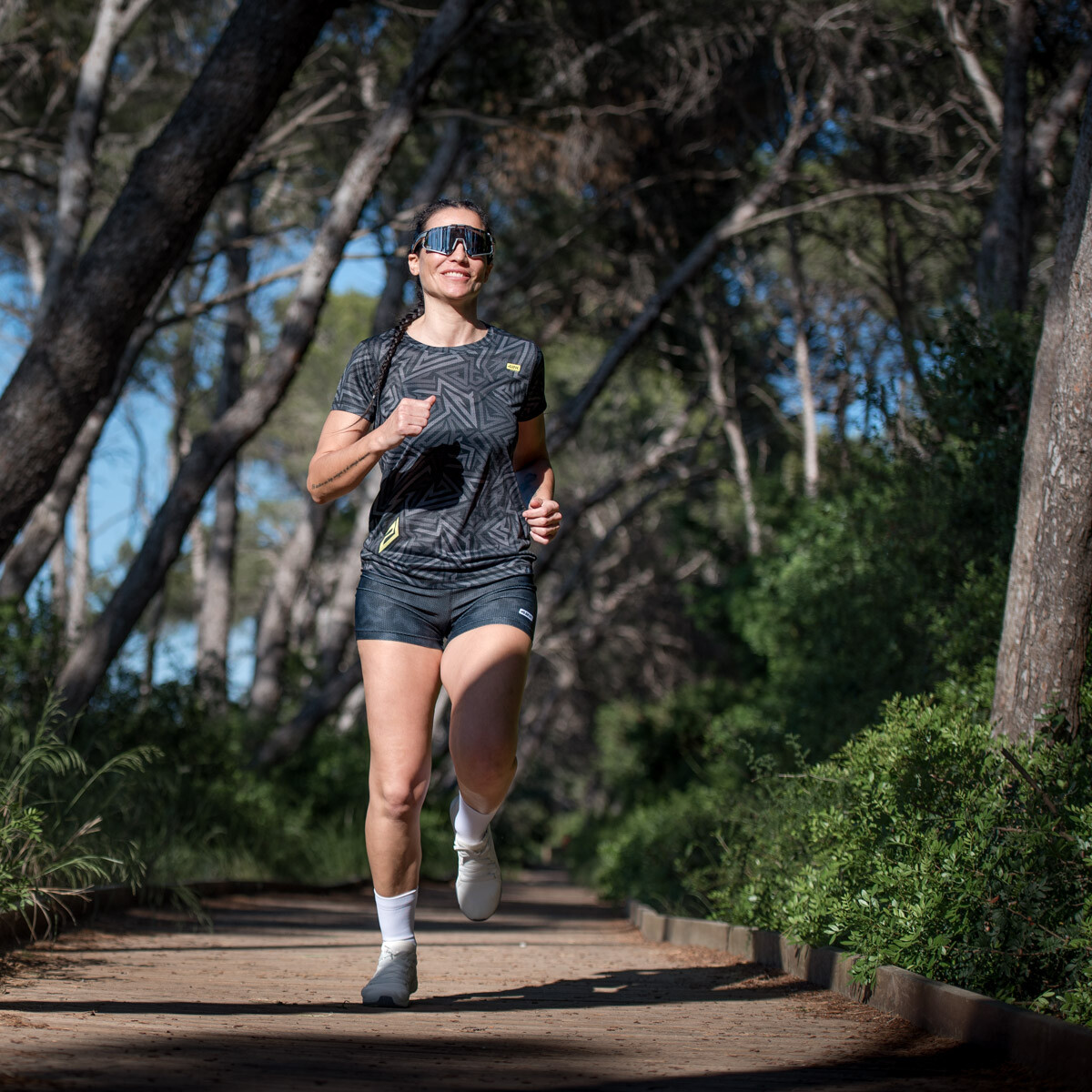
In our Online store You can find a wide range of technical clothing for running, both for men and women.
3. Warm up well before running
Warm up properly before running It is essential to prepare the body and especially feet, ankles, knees, and hips. There are no excuses for skipping the warm-up.
a good warm up It has many benefits: prevent injury, increase heart and respiratory rate, improve flexibility and improve concentration.
If you want to know more about the importance of warming up before running, you can do it with this article 'How to do a good warm-up before running'.
4. If discomfort appears, you have to stop
Act quickly. banish the idea of "no pain, no gain" (no pain no reward); pain is a warning that something is wrongSo anyone who decides to start running after the age of 40 and notices any persistent discomfort or pain should see a physical therapist or health professional to determine if there is a problem.

It is normal that during the first weeks (even the first months) the shoelaces, or what in scientific terms is called delayed-onset muscle soreness or DMAT, may appear to warn that the level of intensity of physical activity for which you are prepared has been exceeded.
That is, if one day you run faster or for longer than expected without having the appropriate physical condition, it is likely that you will suffer muscle fiber microtears which are the ones that generate the discomfort known as shoelaces.
The shoelaces are temporary and they go alone if you save a little repose and you combine it with gentle stretches and applying heat. What you should not believe is the false legend that 'the soreness disappears with more exercise' or that the remedy is to take sugar water; It's fake and it's dangerous. The shoelaces alert you that you have forced yourself too much, so rest for a couple of days and when they have disappeared, run again with caution.
What you do need to learn is how to differentiate stiffness from other muscle or joint pain that should put you on alert and ask for the opinion of a physiotherapist as soon as possible.
5. Healthy and balanced diet
Una healthy and balanced diet It is very important for anyone, but it is even more so in case of regular physical exercise and especially in people who start running after 40.
There are many variables that can affect the nutritional requirements or needs of a person (age, sex, weight, state of health, intensity of physical activity at work, intensity of sports activity...), but as a general rule it is necessary to bet on a complete diet that includes all the nutrients that the organism needs: carbohydrates, proteins, vitamins, fats and minerals.
And a very important aspect of a healthy and balanced diet is to take care of hydration, especially in summer. It is recommended to drink 1,5 to 2 liters of water a day, although hydration needs may vary depending on physical activity, temperature, humidity... On the importance of hydration, the article on our blog may be interesting for you titled The risk of dehydration in running.
If you have doubts or want to make changes to your diet and you don't know how to do it, it is advisable that you go to a registered dietitian-nutritionist.
6. Work the strength
If you're going to start running after 40, you must work the force. Strength training is very important for the entire population from the age of 40 (muscle mass begins to be lost from the age of 30) to maintain adequate muscle mass and to provide a state of healthy fitness as they get older. fulfilling years.
Stronger muscles will help us improve our performance in the gym. running. Force work is essential to progress and improve as a runner, but it is also very important to prevent injuries. It is essential to include strength work in the weekly training routine.
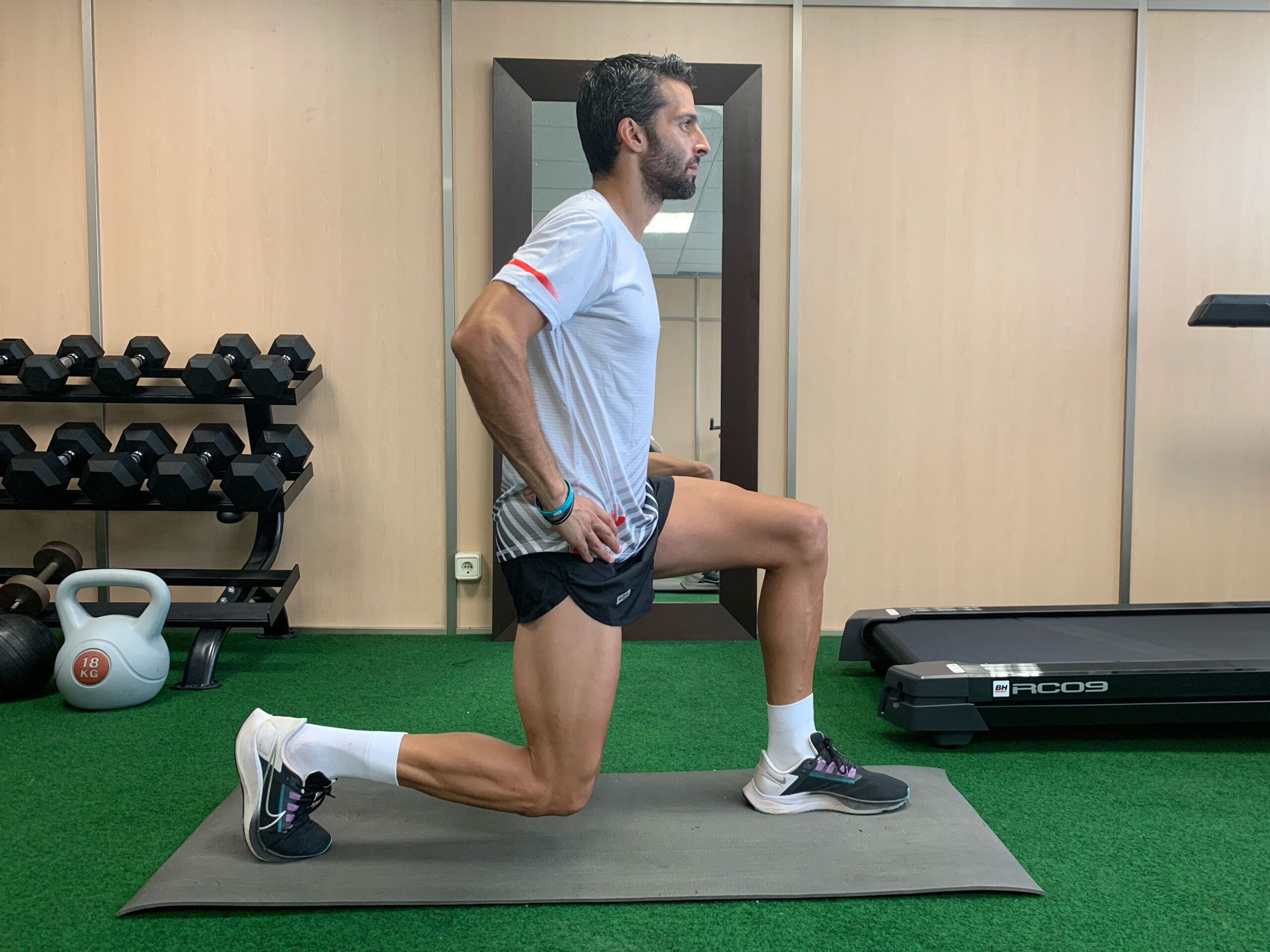
In our blog you can find different articles to learn much more about strength training and the importance it has to improve in the running. If you are starting to run or have been running for a while and don't know how to start working on strength, these articles can be very useful: 3 basic strength exercises for legs, Core training for runners o Strength training, essential for runners.
7. Give importance to rest
rest is very important to progress in the running. You have to take the steps with patience and without wanting to train more than you should.
Especially when you start running after 40, rest is just as important to progress as training. The rest allows the muscles to recover to face the next training session. Do not listen to anyone who tells you that to progress you have to run almost every day or that a single day of rest is enough to recover.
If you start running and try to go out every day to train, you will be taking a huge risk and you will surely end up suffering an injury or discomfort that will leave you in the dry dock.
A good start can be can be run 3 days a week and dedicate a fourth day to hard work.
8. Don't be in a hurry to put on a number
Don't be in a hurry to compete do not rush. It is advisable to increase the intensity of training gradually and following a plan, but without thinking about competitions or competitive challenges.
If you start running after 40, it is advisable dedicate between 4 and 6 months to training and to get your body used to the changes that the running will produce in it. Don't be in a hurry to sign up for a race no matter how much they tell you to. "It's the same as a workout, but with a bib".
It is true that the running It is a sport that asks for new challenges as you progress. Trying to improve yourself physically and mentally is very good, but you have to do things wisely. Participating in popular races and starting to monitor the results can be the perfect fuel you need to move forward and try to improve, but you have to take the steps very sensibly and without rushing.

If you follow a training plan with perseverance and seriousness, you will be able to go increasing pace and race time progressively. When you're able to consistently run 45 to 50 minutes without difficulty, it may be time to become a popular runner and enjoy the thrill of putting on your first 5K bib.
When you can complete 60 minutes of continuous running without difficulty, you can try the most popular distance: the 10K.
Guillermo Peñalver: his imagination seeks to pamper the runner.
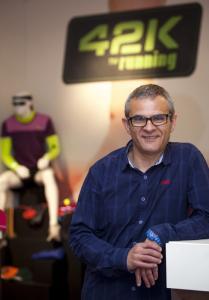
A sports entrepreneur with very clear ideas. The gradual success ´of his signature and the satisfaction obtained, have generated in Guillermo a debt with athletics. “A new generation of professionals is needed with the motto "Take care of the athlete" so that everyone ends up happy with each test; those who organize it, those who run it and those who sponsor it. "
You have to go beyond the businessYou have to take care of the athlete, understand the organizer and, above all, work with passion. It is not just about making money, with that idea you are not going anywhere. With these premises and a lot of imagination in the face of the crisis, Guillermo Peñalver has created a prestigious brand in the world of popular athletics. 42k running It is today synonymous with quality technical t-shirts. Guillermo is from Valencia and his success is the triumph of the businessman who knows how to adapt to circumstances. Passionate about popular athletics and his work, the crisis took him out of comfort and forced him to reinvent himself, that fashionable concept that can be perfectly applied to this moron from running, as he defines himself. Holy madness.
A failed padel match started him in the running in 2003 and has never stopped running. His party mates could not attend the appointment and, since he had proposed to play sports that afternoon, he put on some sneakers and went out for a run alone. The result a priori was not encouraging: 3 kilometers in total, stopping three times. However, he liked the experience of coming home sweaty. And since then he cannot remember how many times he has enjoyed that feeling.
Guillermo already worked in the family merchandising company that his grandfather created in 1949. With just over 20 years he joined the business that was later to change his life. It happened in 2010, when Guillermo realized that the t-shirts they gave away at popular races were of very poor quality, cotton garments that generate a towel effect and irritate the skin.
There was no point giving runners t-shirts that they couldn't reuse in their training sessions. And here begins your imagination and adaptation to the crisis. He believes that he has not invented anything, he has only made technical material accessible to popular brokers. That has been his great contribution; manufacture t-shirts that the organizers can afford to include in the runner's bag and take care of the athlete with garments that comply with 3 indisputable laws: breathable, that do not cause chafing on the skin and that do not lose color with the innumerable washes that sportswear require .
Your company has 16 employees, responsible for the entire process, choosing the thread, the dyeing and the design of the collections. Raw materials and manufacturing are Asian, but from spinning to pattern making, the entire process is carried out and controlled in the capital of Turia.

42k running has managed 1.500 events in 2015, in Spain, France, Italy, Portugal, Ireland, and even in the United Arab Emirates. Races such as the Madrid Half Marathon, the BBVA, the Massamagrell 15k, the Valencia 10K, the Santa Pola Half Marathon or the Martín Fiz de Vitoria Marathon trust him. For example, for this year's Liberty race you will have to make 13.000 T-shirts. Since she works for club and event organizers, she now intends to offer her products to runners in an exclusive online store that she will gradually build.
To all this, Guillermo continues running in the mornings. At 6:30 in the morning he goes out for a run for an hour, about 10 km. Also nothing. About 50 kilometers per week at a paw and three more based on strokes. Not bad at all for an amateur like him.
He is concerned about the turn popular athletics are taking, where distances and times are no longer respected, where there is a true madness to have our own photo on social reds crossing the finish line of a marathon, whether or not we are prepared for such a challenge. You have to help new runners to avoid animal attacks and the consequent misfortunes. It can't take more than 5 hours to do a marathon because that's insane.
The messages that arrive at 42k running through social reds they show Guillermo and his companions that the path is the right one, although he thinks this business has a roof. That is why you have to help and even pamper the runners. The goal is the professionalization of organizers, timekeepers and suppliers. All very reasonable, maybe going for a run so early really wakes you up, relaxes you and makes you think. We will have to prove it, right?

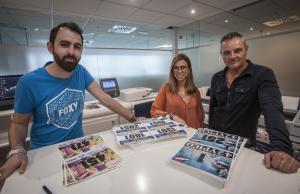

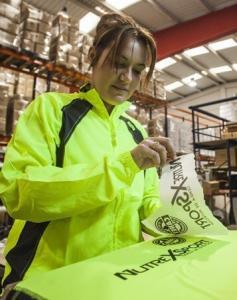
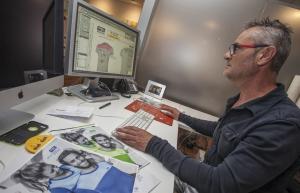

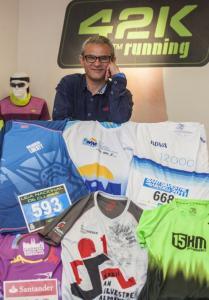
Text: Javier Lázaro
Photographs: Bárbara Sánchez
Practice running It's fashionable. For many, starting to run may not be too complicated if they have led a life in which they have always integrated a sporting activity, but for the most sedentary it can become quite a challenge. Of course, it is worth considering it, since the benefits it will bring us will be very considerable. Let's see below some practical tips for people who want to start running.
First of all, it is important to check our physical condition through a medical check-up to guarantee that the practice will not entail risks to our health.
Once our correct state of health has been verified, the next step is to acquire a suitable kit. Going for a run is a very cheap sport, you do not need to rent tracks, or buy rackets, balls, or balls that are necessary in other sports. You only need to be properly dressed and footwear.

Get a good technical shirt de running to wear it in summer, and add a windbreaker for winter, as well as some pants running and some tights for when the cold hits.
And of course, buy some good sneakers. running. You can choose them based on multiple parameters, such as your weight or your footprint, but also the terrain on which you are going to practice the activity: asphalt, land, roads…
You can also add countless accessories according to your needs: gloves, hats, compression socks, as well as all kinds of sports electronics devices such as watches with GPS, heart rate monitors, mp3, which can help you improve and make the practice more comfortable.
With the material that you have chosen, it is already a matter of making up your mind and starting with comfortable sessions, so that exhaustion does not take away the desire to go out the next time.
In short, equip yourself correctly, find a nice place and, if possible, good company. You'll soon see how even the popular racing bug will bite you.
The course of races like those of the Popular Racing Circuit of the Valencia Provincial Council it keeps surprises for its participants, like slopes. Many of them are not used to running unevenly, and lose pace on the climbs. So that running uphill stops being a problem and becomes a stimulus, we are going to see tips for runners.
-The training. You have to train on slopes. First, you have to get a base with long runs, and then we will gradually introduce the slopes in our training to get used to it. The ideal are slopes between 200 and 400 meters with unevenness of 5 to 8%. They are power exercises that will help us strengthen our legs.
-Reduce your stride. Going up a hill with a wide stride is very difficult, so as the climb gets harder we will reduce the width of the stride. Even if you take more steps, you can go further with less effort.
-The position. Technique is very important. One of the most useful tips for the runner on the slopes is to keep your eyes straight ahead, without looking at your feet, and your back straight. We will be able to breathe better, and the effort and the feeling of fatigue will be less.
-Don't speed up. Many inexperienced runners take advantage of the slopes to increase the pace, but they reach the end exhausted and on the flat or the descent they lose more than they had gained. You have to climb calmly, without losing your head. The slopes are a good place to attack, but the ideal is to do it at the top and keep the change of pace on the descent or on the flat.
-The descent. If the rise is important, the descent is no less. In addition to allowing us to recover, it is where great differences can be opened, that is why good running technique is important.
Thus, the hardest slopes will seem much easier to us.
Source of the image
«A solidarity race whose profit will go to the national pulmonary hypertension association«
La APP (Association of Owners and Users of the Almussafes Industrial Park) will organize a charity raceThe next February 1th 2015, in favor of the National Association of Pulmonary hypertension. The object of give visibility and raise funds for this disease.
This race is part of an initiative inspired by the cause of the young woman Maria Moreno, recently passed away from this disease, and was born from the collaboration of the close circle of María and the ANHP (National Association of Pulmonary Hypertension).
"We started running popular races with María in her wheelchair to publicize the disease, and now that she is gone, we continue with that task, and we try to raise funds for the Association and its important work," explain those closest to them.
If you want more information about the race click on this link
About the disease and the work of the Association
Pulmonary Arterial Hypertension (PH) is included within the group of diseases labeled rare. Pulmonary hypertension is the simple name given to a complex health problem. PH is defined by the excessive increase in pressure in the arteries that carry blood from the heart to the lungs, an abnormal increase. Symptoms are vague (chest pain, lack of aire, fatigue...) and worsen with the progress of the disease until producing syncope and severe dyspnea on exertion. Diagnosis is therefore very important.
The National Association of Pulmonary Hypertension (ANHP) focuses on offering support, guidance and psychological help to patients and their families. In addition to the dissemination of the disease to favor an early diagnosis that can extend the life of patients by several years. The symptoms of PH are often confused with those of other diseases, hence the “phantom disease”.
More information about the association at: www.hypertensionpulmonar.es
About the APPI
Association of Owners and Users of the Industrial Park (APPI) welcomes you. We are an Association that groups together the different companies that are part of this Industrial Park, located in the town of Almussafes (Valencia) next to the Ford Spain factory, and where most of them belong to the automobile sector and are suppliers of said multinational.
My name is Francisco Xavier Lopez, After a long period of physical sedentary lifestyle (thirty years to be exact) I started a totally different life than the one I was used to: diet, exercise and now I can't stop running.
I started running to test how stamina I had, what I could hold on to. Little by little it went increasing time that endured Running and little by little I went decreasing my weight, I remember how it took me to hold on for twenty minutes, then I went up to twenty-five, thirty, thirty-five etc. In about eight months he had lost thirty kilos permit thanks to physical exercise and one by onelimehealthy eating.
After almost eight months running but without signing up for any Popular career I decided to try my luck, so on November 6, 2011 at the age of 31 I debuted in a popular career, it was in Cabañal (Valencia) long before this moment I watched the races from “the barrier” I remember how I said to myself “why are these people running?” It was a very rainy day in Valencia on the way to the race, my father and my sister accompanied me, In the car, they told me that it was raining a lot, that it was very cold, that there would be no one on the starting line, but when they got there they were surprised by all the people there despite the bad weather, honestly it surprised me too. This race was no more than six kilometers and my average was 5:30 to me it seemed like a pass, today I am between 4:15 and 4:20 which may not be a great average but for me it is something incredible and unthinkable very recently.
Little by little the ambition and passion for running grew, running several 6km races other than 10 k and a few 15 k, I already dare with the half marathons (I have run more than ten) and if nothing happens in the month of November I will debut in my first marathon, I am very excited!
Today I sign up for all the races that I can and another of the benefits that this sport has given me has been knowing many towns or cities in their popular races, running through their streets or through their landscapes many times makes you focus on the landscape and forget about the race.
Running is already part of my lifestyle, when I have ever had to stop running either due to illness, injury, or bad weather, I feel as if something is missing, more than three days without going jogging I cannot be.
Francisco Javier López
I recently found out from you, when reading the testimonial of Johana calvancanti, that I am a Slow runner. But I'm happy about it.
We begin by taking walks, those walks in which speed allows you to exercise more conversation than your legs.
"Running is a coward's thing." That is what those who are not brave enough to try say.

The girls we signed up for the Women's Race in Valencia. Our debut. We were running for a good cause, and besides… WE HAD SUCH A GOOD TIME TOGETHER!
Little by little we lengthened them, imbuing them with seriousness and adding a point of "speed". Constancy and effort are necessary, to fulfill my objective: 10K inside the Military Parachute School of Alcantarilla, along with my sweetheart, recently operated on for cancer.
The day arrived and with all the support of the rest of the team: TEST SUCCESSFUL
From that point on, we got a fever, and we signed up for all Popular careers that are within our reach. Most of them collaborate with a good cause, and we do our bit.
For those like me, we were never good at sport, this is a great challenge, a great effort, but at the end, tired and sweaty, with the great reward for having reached the goal, our goal. I may never win a medal, but I have managed to feel capable. Able to try and get it. No one ever said it was going to be something easy, but it was enriching.

The secret is to enjoy it, the company, the landscape, the environment, discover the world that opens before us and learn from it, from many people with what some call "limitations", persevering and fighting people, who could give many lessons in courage. Seeing them, making an effort and with their smile, makes us wonder that many times the limitations are in our mind.
Each one looks for the way to the goal, and seeks his particular goal, but in the end, what is the goal? The goal is happiness, although each one looks for it in something different.
I do not tell you my best times, but yes, I am one Slow runner, but not just any, I am one HAPPY SLOW RUNNER.
I continue to trot with him, and next to what has already become a great family for me, who is by my side in bad times, pulls me in times of weakness and celebrates my triumphs as if they were his.
Angelines Debon LaCruz
Today we tell you the story of German Tizón one of the fans of 42K on Facebook, one of our most active fans.
That's what I thought, these athletes, the popular runners, are crazy, sitting comfortably in my car, or on the terrace of the cafeteria while watching a runner go by, and another and another. What will they see in this running? I was wondering. As that one says, each madman ... with his theme.
But one is adding years, and at that time more than years they seemed stones. Stones that were accumulating, I don't know the reason, in the belly. And it was no longer a matter of years, It was months, and at the end almost weeks or days that it seemed that some strange sorcerer had taken them with one and had proposed to periodically shrink all the clothes. Oh Mother! Shrunken clothes! Little desire to do anything, and the sofa every day with more shape of my body, as if it were a contemporary sculpture, the kind that you see in museums and that many times we wonder what it is. And the day arrived. 
Year 2010. Summer day. That mirror reflected a man stuck in grease. Oh Mother! Car, sports shop and full lot: technical shirt, shorts running y Shoes of running .Car. House. To dress. Athlete mode ON. Let's see what these crazy people who run to this every day see. It's fair to say I gave myself a week or so to go or quit. The first day would not be decisive. Oh Mother!! Yes they are crazy!! After five minutes my body cried out to return to the sofanil state (that was life!!).
After five minutes of running, who has changed the airand that I breathe because of irritant gas? Water please!! After five minutes running… I couldn't with my ass!!! For home. Shower (that was not bad) Second day. We repeat protocol. Yes indeed. The T-shirt I had washed it the day before and in summer it soon dries. Ten minutes!! Oh Mother!! To the shower that is really cool !! And little by little we come to the end of the week where that of correr it seemed that My body was beginning to find it "funny" And the weeks, the months went by and it became more and more necessary to go for a run. And at the same time one felt more viscous, more cheerful, more of everything!
The spell of the clothes disappeared and until there came a moment when it was turned upside down. Now the clothes are getting bigger and bigger. Oh Mother!! Y going for a run became a necessity. To find myself. Of thinking. To relax and give myself the reward of a well-deserved shower at the end. And they started the Popular careers. The first with a lot of fear since he did not know if he would reach the end. I think the night before I barely slept from the shame of not being able to finish. But I finished that and many more that came after, and I hope they will. There is no pretension in going to "compete" To the races. Or if. Finish each one. Enjoy them. Spend a pleasant time with the other popular runners and little by little instill in my son the need to have a healthy life accompanied by sports.
The sofa has gone, poor thing, recovering its primitive shape. My "beautiful" figure of yesteryear is no longer reflected in him, so I have definitely abandoned the option of dedicating myself to contemporary art. And if. It's true. We have distanced ourselves. I have been changing him for the asphalt, the trails, the beach... he is jealous, and from time to time I also give him a hug. But it's not the same anymore and he knows it.
I have run races 6K, 10K, 12K, 14K, half marathon. I miss the thorn of the 42K. Who knows? one day maybe I will propose. Of course, always with the support of my partner and my son, without whom everything would be more difficult, since there is no greater prize than finishing a degree and receiving kisses and hugs from yours.
German Tizón
“Tell us your story”
If you want to be one of the protagonists of our blog, send your article to socialmedia@42krunning.com
If you combine competing in a sport with participating in popular races looking for a good performance, first forget about matching race and game on the same weekend to avoid not only fatigue but also injuries.
- Do series? Actually, those games that you play could substitute in a certain way for the series since they are continuous short rhythm changes (anaerobic and very muscular work).
- If you want to compete at a certain level (at least less than 48 minutes in the 10 kilometers) you must already follow a training plan with 3 days a week that includes a quality day.
Eating correctly is key to improving as a runner. It may seem obvious, but reality shows us that things are not always clear. It is very common to find runners with many doubts, erroneous beliefs or confusion about what correct nutrition should be to achieve adequate and correct sports performance.
Training is the basis of improvement in any sports specialty, but in order to obtain effective benefits from training, you must follow a correct procedure.limentation.
On too many occasions there are popular runners who care a lot about how to train to improve times or face the challenges of long-distance races, but they neglect or do not give due importance to proper training.limentation.
Eating correctly has benefits in health, sports performance and physical appearance
Why and why is it important to eat correctly? Eating correctly provides benefits in three very important areas, ordered according to their importance as follows:
- Health.
- Sports performance.
- Healthy physical appearance.
When looking for reasons or reasons to eat correctly we should always be clear that the main priority is health, secondly sports performance and thirdly having a healthy physical appearance.
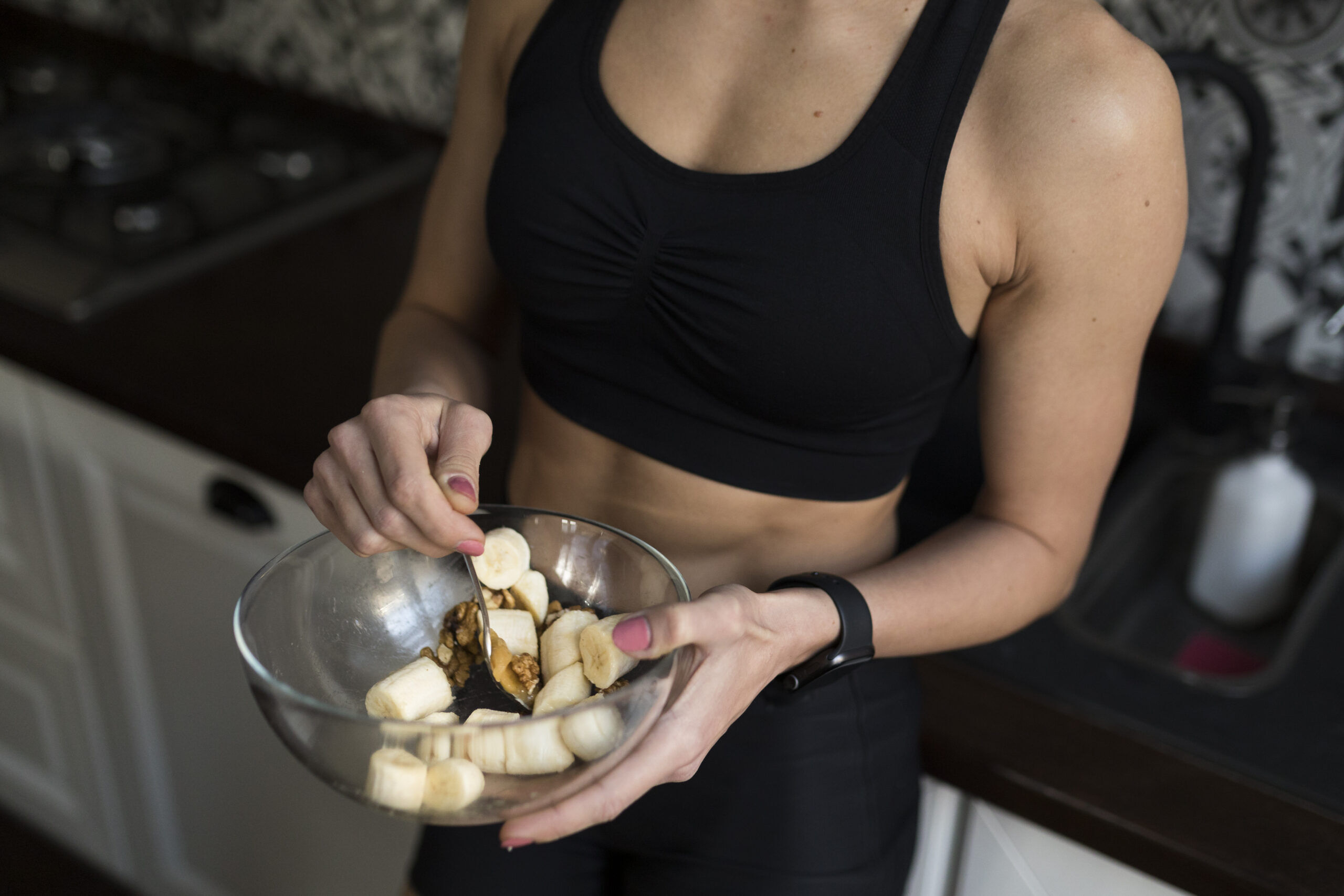
Have some good nutritional habits It will provide benefits at different levels for health, sports performance and a healthy physical appearance. Let's see the most notable ones below:
Decreased risk of pathologies. With a good nutritional status, the chances of suffering from pathologies such as Hypertension, d, hyperuricemia, hypercholesterolemia, hepatic steatosis, etc.; and if they already suffer (and are not acquired through family genetic inheritance), it is possible to reverse them and make them disappear.
Health & Wellness. Reducing the risk of pathologies is promoting a optimal health for any patient (men, women, athletes, pregnant women, nursing mothers, the elderly, children, etc.), which represents a considerable increase in quality of life as well as economic savings due to lower spending on drugs.
Weight loss. Evidently, eating correctly following a correctly designed (and followed) diet, moderately hypocaloric in nature, has a loss of fat mass.
Increased muscle mass. A dietary plan proposed in harmony with the training plan established by a coach allows the athlete increase your muscle tissue. Eating correctly in combination with good training focused on the established sports objective will mean a healthy physical appearance.
Post-workout recovery. Eat correctly under correct guidelineslimentaria will help recover muscle glycogen stores, regenerate broken muscle fibers during training, etc. If a runner makes the mistake of neglecting his or herlimentation, you can end up showing wear and tear and the demands of training; without a correct alimentation, sooner or later, feelings of weakness or fatigue will appear, which will mean loss of sports performance.
Preparation of competitive appointments. Eating correctly throughout the season, and specifically the week before a competition (especially the day of the test) is essential for correct sports performance, whatever the sport practiced. The difference between getting on the podium or not, improving personal bests or finishing with more energy than rivals is in thelimeTraining (and at the training level, obviously).
Increased athletic performance. SlablimeThe things that are ingested are the gasoline that is provided to the body to make an effort (among many other functions). A supercar uses 98 unleaded gasoline, not diesel, so if you want to perform, you will have to give your body 98 unleaded gasoline, that is, a alimehealthy eating and perfectly designed based on sex, age, type of sport, work and training schedules, blood test results, pathologies, needs and tastes, etc.
Lesions decrease. It is clear that eating correctly will not prevent you from spraining your ankle while running because of a pothole or a rock, or it will not prevent you from dropping a dumbbell on your foot in the gym and causing an injury. However, a diet that provides the necessary energy, as well as the recommended daily intakes of all the essential nutrients, is capable of avoid the appearance of cramps or jerks, therefore increasing sports performance.
Eating correctly does not have to be confused with eating less.
Sometimes there is a false belief that eating correctly means eating less, but in reality what it is about is eating well.
When a person decides to lose weight (reduce fat mass) one of the first decisions they usually make is to cut back on daily calorie consumption. Is it a correct decision? The answer to this question requires a prior clarification: to achieve a weight reduction (fat mass) a negative caloric balance must be generated, or what is the same "burn" with physical activity more calories than consumed in the different intakes.
To achieve this negative caloric balance there are several ways:
- Reduce the amount of kcal ingested on a daily basis.
- Increase our daily caloric expenditure.
- Merge both options: cut back on intakes and increase physical activity
In most cases the best option is increase exercise and not just reduce calories without further ado. Although it is advisable to individualize and personalize each case (because each person may have personal and specific circumstances); In other words: what a runner says he or she does through their social reds cannot be generalized as what is ideal for anyone.
Reduce without any criteria the quantity and/or frequency of intakes can be harmful to health since you can fall into macronutrient (carbohydrates, proteins and fats) and/or micronutrient (vitamins and minerals) deficiencies. This is a bad decision because it can cause various damages: tiredness, fatigue, bad mood, hypoglycemia, anxiety, decreased athletic performance, anemia, easier to fall ill (the immune system is weakened), etc.
Furthermore, and as stated in another article on this blog Losing weight in the middle of the competition season can be a bad decision. It is not advisable to undertake a weight loss strategy during the competitive period because it will be difficult to obtain benefits and sporting performance will surely be harmed.
On the subject oflimentation to reduce fat mass (weight loss)The best advice that can be given is go to a registered dietitian-nutritionisto to be in charge of designing a dietary plan adjusted to the needs, lifestyle and sporting demands of each person. A dietitian-nutritionist will always look for the best option to allow the person to achieve their sporting goals but always having as the highest priority the improvement of health through correct nutrition.limentation.
Remember, it's not about eating less but about eating correctly. You can reduce body fat with something as easy as doing frequent physical activity and eating correctly: eating a healthy, varied and balanced diet in which no group of foods is eliminated.limentos (consume meat, fish, eggs, fruits, vegetables, nuts, legumes, pasta, rice, dairy products, bread...), but in which the foods are clearly limited.limeultra-processed nts.
Forget the 'beats'limentos'; eating correctly is eating everything in the right amount
If you are a popular runner and you care about your nutrition, you have probably heard of the term 'exceed'.lime'ntos'.
If we had to define what the exceedslimein it would be something like “those toliments that have the capacity to cover all the energy and nutritional needs of the individual.”
But does anyone believe that alimeHow much can it have the capacity to cover all the energy and nutritional needs of the individual? Well no. The term 'exceedslimento' should not exist, however we can talk about itliments that have “X” capacity on health.
Avocado is good for the heart and has been considered a 'superlimento'. Indeed, numerous studies conclude that adequate consumption of said alimento contributes to a good state of cardiovascular health, improving blood levels of cholesterol, triglycerides, etc. Does this mean thatlimeIs eating avocados good for your health? No; someone who only knowslimeIf you eat avocados, you will probably end up suffering from hypoglycemia and you will always be exhausted, anxious, hungry, etc.

Eating correctly is consume theliments of all kinds in their right measure. You should not abuse alimenot because they say it is good, nor radically avoid othersliments. Would you like to eat a donut one day? (not every day of the week)? Forward! Food is one of the great pleasures in life.
Therefore, rather than talking about surpassinglimewe should do it exceedslimentation, which would be defined as a style oflimentation in which all groups oflimein (dairy, bread, pasta, rice, legumes, nuts, fruits, vegetables, meat, fish, eggs, etc.) and allows the individual to achieve a correct nutritional and health status.
In other words: One tolimento, no matter how good it is, is not capable of covering all the nutritional needs of a person, while onelimeVaried and balanced nutrition allows the person to achieve the recommended daily intakes (RDI) and maintain an adequate state of health. Eating correctly is, in short, having alimeRich and varied nutrition that optimally covers the needs that we may individually have based on our age, sex, state of health and demands related to the physical activity we perform.
42K · All rights reserved
